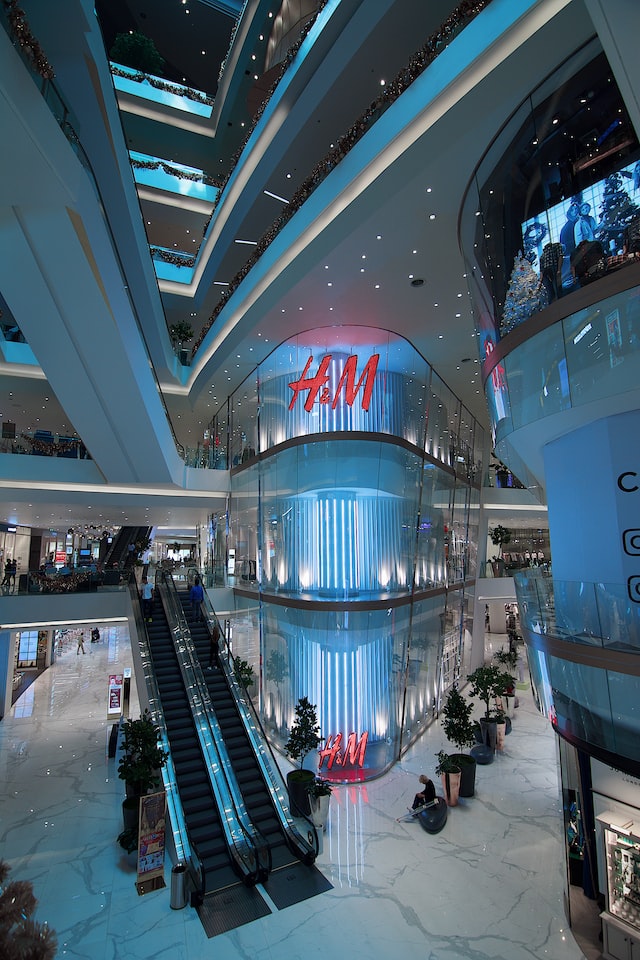
H&M is a clothing brand founded in Sweden by Erling Persson in 1947. Today, H&M sells clothing, accessories and cosmetics in more than 1,500 shops worldwide. H&M is sweeping the streets of Europe thanks to the company's three-in-one philosophy of fashion, quality and price, as well as an aggressive expansion policy.
The old H&M shop on Stora Gatan in Sweden was the first H&M shop in the world, and the H&M brand name is a combination of the "Hennes" women's and "Mauritz" men's brands, each taking the first letter "On 8 June 2016, H&M was ranked 79th in the BrandZ Top 100 Most Valuable Global Brands 2016 list.

Development history.
Affordability is the path that H&M has always chosen. The company was founded in 1947 by Stefan Persson's father, the current chairman. At the time, H&M's main focus was on affordability, and as the Swedish retail sector, like most of Europe, had always been dominated by expensive department stores, H&M opened up a big red plate in the market right away.
When Pearson joined the company in 1972, he wanted to add fashion and quality features to the only low price point the company boasted. Although many people thought that these characteristics could not exist together in one brand, Pearson believed that the company could do it. H&M's claim of "fashion and quality at the best price" was a real shot in the arm for the company's success.
H&M has replicated this triple success formula in a number of other markets, and although H&M comes from Sweden, its largest market is now in Germany. According to Forbes magazine, when Pearson took over the company from his father in 1982, H&M had just over a hundred shops, most of them in Sweden. Today the company's ambitions have spread from Europe to the Americas, with more than 800 shops in 14 countries and 88 per cent of last year's turnover coming from foreign markets. 90 new shops are expected to open in 2003. The company's expansion rate over the past six years has been around 75% and the aim is now to enter a new country every two years.
On 12 April, the Swedish fashion retail giant H&M brand boutique officially opened on Huaihai Road in Shanghai. According to H&M's claim, its single-store turnover has reached a maximum of two million yuan in a single day, which is equivalent to the combined daily sales of 200 Chinese clothing brands.

Brand culture.
H&M shops offer a diverse range of products, providing popular basic clothing for men and women as well as children, and also selling cosmetics. The average price of clothing in the shop is only US$18. The company believes that affordable prices are the only way to make it affordable for consumers to visit the shop every year, even every season, to buy new products. This strategy is most appealing to women aged 15 to 30 who are looking for once upon a time rather than forever, and who want to keep up with fashion at all times.
In order to keep costs down and maintain its affordable strategy, H&M does not have its own ready-to-wear factories and outsources manufacturing to 900 factories. In order to get the best prices, the company carefully selects the outsourced factories, which are scattered in 21 of the world's lowest paying countries. Thanks to cost control, the company is able to maintain a gross profit of around 53% despite the low price of its products.
In addition to affordable prices, H&M also chases fashions. The company sees fashion as a perishable foodstuff that must be kept fresh at all times, so it strives to keep its stock to a minimum and to keep a constant flow of new stock. So new ideas have to be translated into clothing quickly, so that consumers can quickly buy the clothes on the shelves and showcase them on the streets as they are still fresh and fashionable.
To achieve this efficiency, all the company's clothes are designed by the eighty designers in the company. H&M is one of the fastest in the industry, compressing the time from design to shelf to as little as three weeks. This gives the company the ability to offer products that are at the cutting edge of fashion at any given time.
In addition, the company analyses the sales of each garment on a country-by-country and store-by-store basis on a daily basis to see which items are selling well and which need to be produced more immediately, which also allows for a smoother supply of goods. When H&M opened its flagship shop in New York in the spring of 2003, the company was even able to stock up on an hourly basis to meet demand because of the overcrowding.
Business Week recently commented that H&M was "redefining affordable fashion", confirming the company's belief that price, fashion and quality can all exist at the same time.